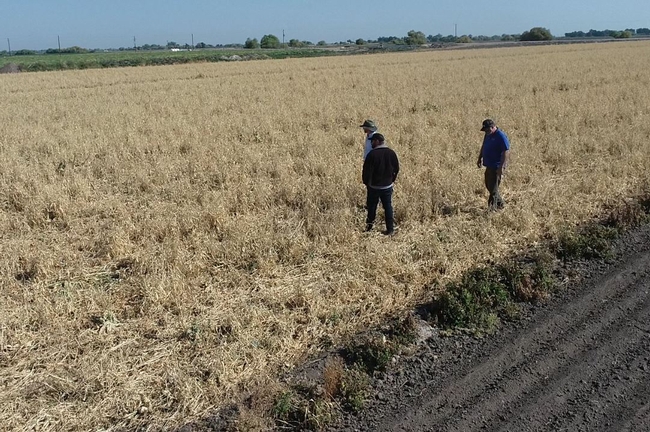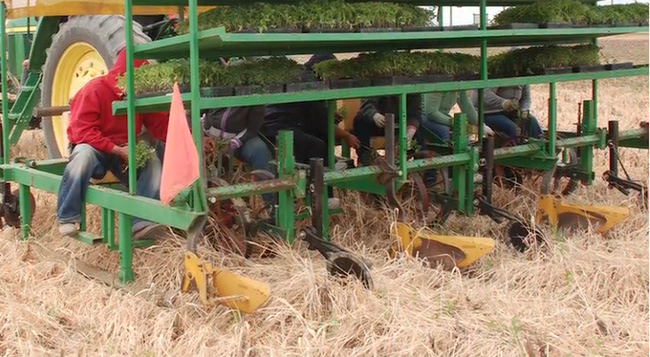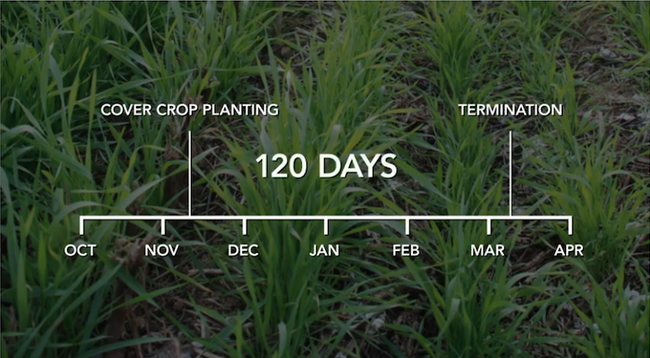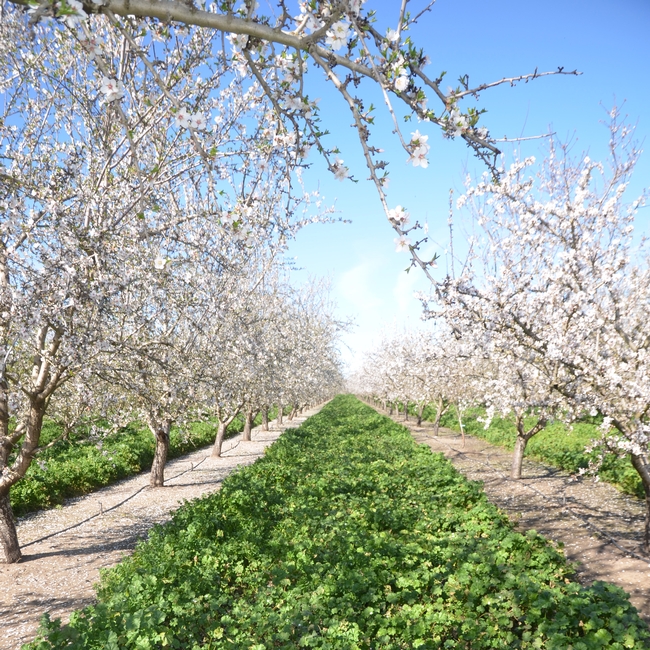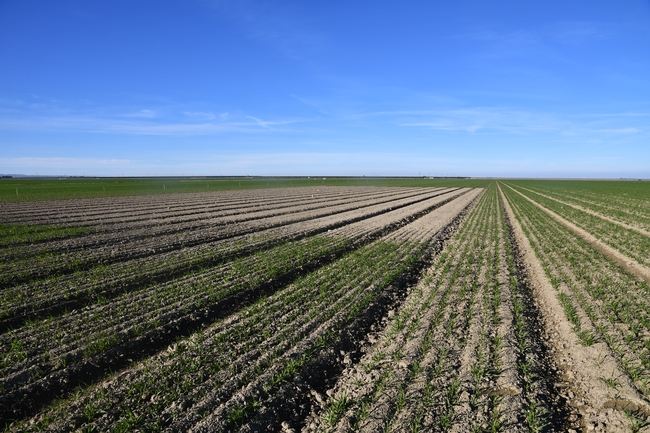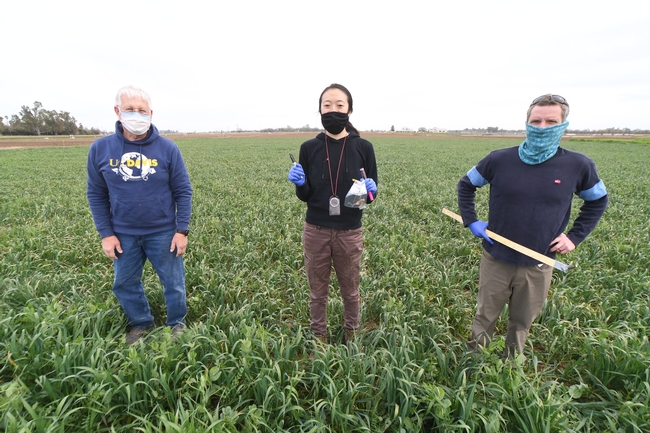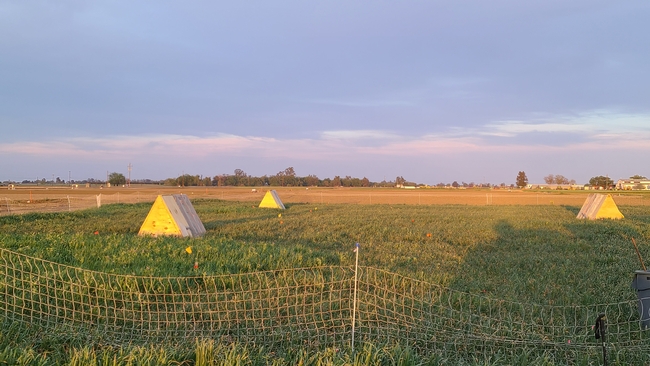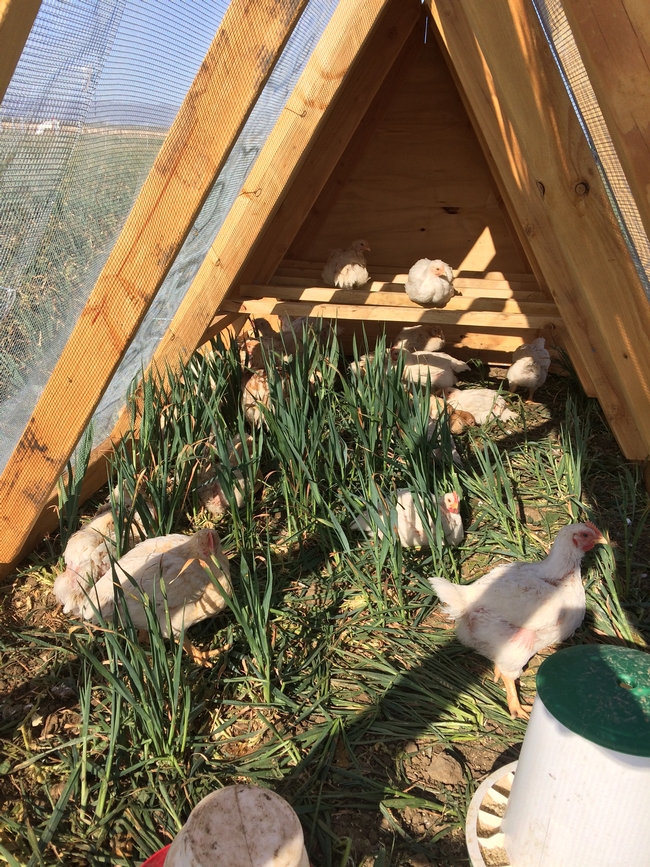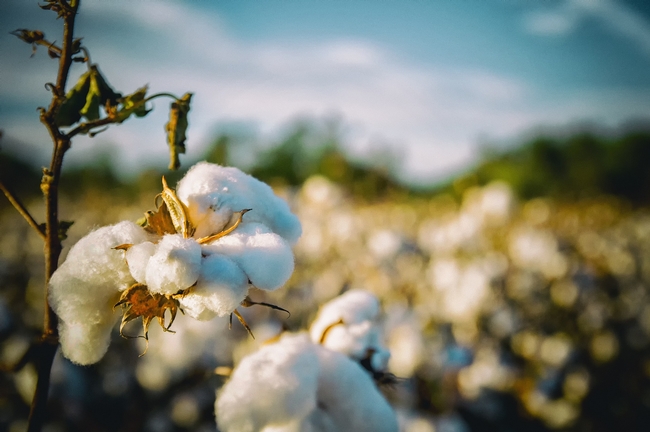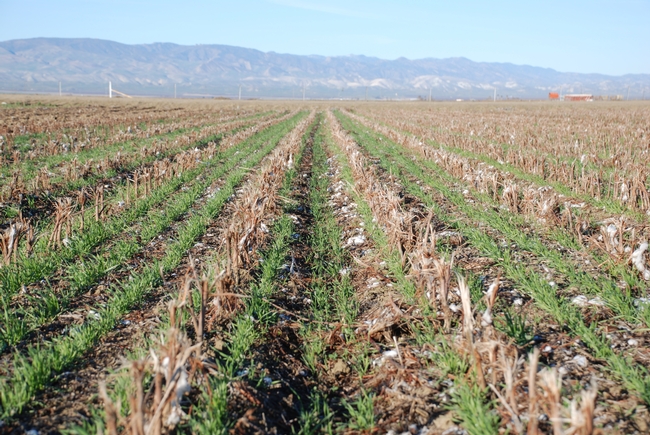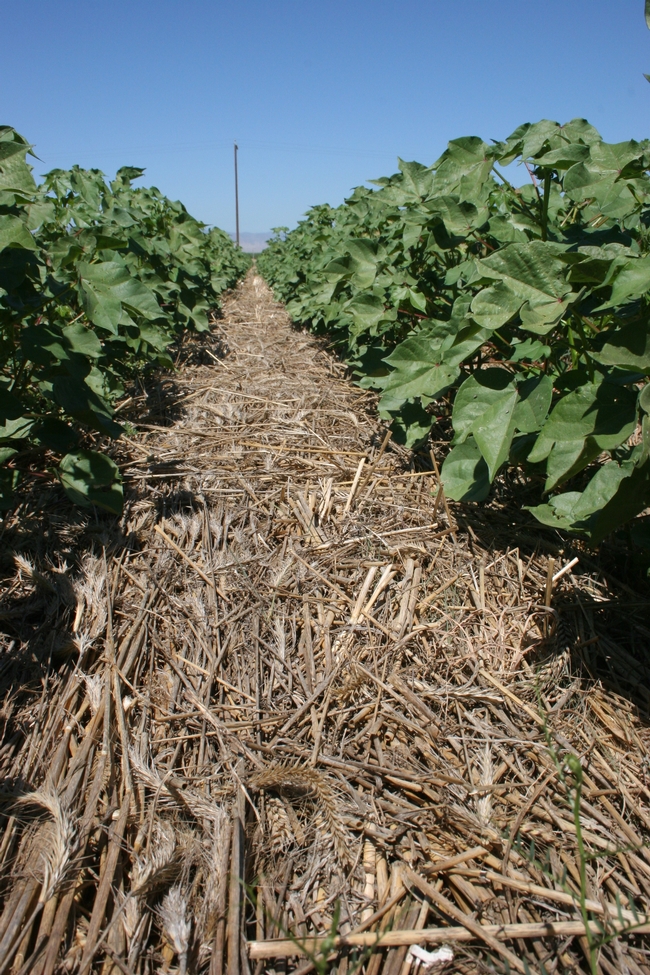Posts Tagged: Jeff Mitchell
Soil health in California cotton fields explored in video series
Over a century of growing cotton in California, scientists and farmers have learned how to better manage soil health. To share their collective knowledge, they have produced a series of videos about cultivating better soil health in cotton fields.
At its peak cotton production, California harvested as much as 1.6 million acres of cotton in the late 1970s to early 1980s. Due to water shortages, growers harvested less than 200,000 acres of cotton in 2020.
“Although cotton acreage in California has fallen off in recent years, some rather impressive advances in soil health management in San Joaquin Valley cotton production fields have been achieved in the past couple of years,” said Jeff Mitchell, UC Cooperative Extension specialist, who formed the California Conservation Agriculture Systems Innovation Center with growers and production consultants.
In partnership with the Soil Health Institute of Greensboro, NC, the Conservation Agriculture Systems Innovation Center has released a four-video series on soil health in California cotton production systems (YouTube links below).
“The series of four videos chronicles not only the history of advances in soil health management in San Joaquin Valley cotton systems, but also some major progress that stems from both long-term research and very recent farmer and private sector innovation with new production paradigms,” Mitchell said.
“San Joaquin Valley farmers have done some really impressive work in recent years to improve the ways that they care for the soil in their fields,” Mitchell said.
To improve soil health, growers try to minimize soil disturbance, enhance biological diversity, keep living roots in the soil and cover the soil with plants and plant residue. They experimented with no tillage and cover crops. Researchers found that cotton fields using no tillage and cover crops achieved a higher soil aggregate stability score than standard tillage with or without a cover crop and no till without a cover crop. In no-till fields with cover crops, water infiltrated the soil in seconds rather than minutes.
The soil health videos range in length from 10 minutes to 21 minutes.
The history video traces important contributors and breakthroughs during the 100-plus years that cotton has been grown in California.
The second video features progress at improving soil health made by Cary Crum, formerly of California Ag Solutions of Madera now with Agritechnovation, Inc., and cotton farmers he works with in the San Joaquin Valley.
The third video chronicles the goals and findings of the unique 22-year soil research study that has been underway in Five Points as one of the Soil Health Institute's national program of long-term North American soil health study sites. It shows what is possible when the core soil health principles are implemented consistently in the region.
The fourth video on the importance of soil aggregate stability shows how attention to the dedicated soil health management principles can improve soil structure and overall production efficiency.
One important lesson from the study is that growers must be patient, improvements in the soil occur gradually.
“We did not see changes in many soil health properties or indicators during the first eight or actually 10 years of our study,” Mitchell said.
Videos on soil health in California cotton fields:
Soil health management systems for California cotton: A brief history https://youtu.be/7DWIJ_3QIz8
Recent advances in soil health management in California cotton production systems https://youtu.be/tRWk-d9F1I8
Local research base for soil health management in California cotton production systems https://youtu.be/AdqnsicuGYo
Regenerating soil aggregate stability in California cotton production systems https://youtu.be/K2fsvPTmlF0
New cover crop research can help groundwater sustainability agencies plan
Cover crops seem to offset their water use by improving soil moisture retention
Cover crop research conducted by a team of university researchers is now helping to inform and shape policy to implement the Sustainable Groundwater Management Act (SGMA) in several San Joaquin Valley counties.
“The Madera County Regional Water Management Group appreciates continued scientific discussions on SGMA-related issues, and especially enjoyed hearing from researchers on cover crops,” said Tom Wheeler, chair of the Regional Water Management Group for Madera County and a Madera County supervisor. “This is work that should be helpful to growers as they evaluate cover crops as part of their sustainable future.”
To help protect groundwater resources over the long-term, groundwater sustainability agencies (GSAs) are developing groundwater sustainability plans for their local regions.
"Our findings suggest that cover crop water use is negligible in most water years and the long-term benefits can help GSAs meet their management goals,” said Alyssa DeVincentis, a former UC Davis Ph.D. student who worked on the project. “How cover crops impact soil moisture depends on species and management history, but generally soil moisture at the end of the winter season did not differ between fields with winter cover crops and clean cultivated soils."
From 2016 through 2019, UC Agriculture and Natural Resources researchers and their collaborators amassed very large data sets from almond orchard and tomato field sites located between Chico in Butte County and Arvin in Kern County. They used the data to quantify changes in soil water storage and evapotranspiration that occur under cover-cropped and bare fallow conditions during the winter cover crop growing period – about November to March.
The research team includes UC Cooperative Extension water specialists Daniele Zaccaria, Samuel Sandoval-Solis and Jeff Mitchell based at UC Davis; DeVincentis now of Vitidore, Inc.; and Anna Gomes, Ph.D. student at Stanford University.
The GSAs must first quantify the amount of water going into the groundwater bank through rainfall and surface water irrigation versus the amount of groundwater being removed at all farms within the GSA's jurisdiction.
“To do this, many local GSAs are turning to remote sensing and modeling of evapotranspiration, or ET, to provide data on the regional balance between groundwater depletions versus recharges,” Mitchell explained.
“Because winter cover crops may appear on remote sensing images as water-using vegetation, the sole use of model-driven data coming from satellites could become a disincentive to the practice being used.”
“This approach may not account for the important benefits that winter cover crops provide San Joaquin Valley farmers like Justin Wylie, a Madera County almond and pistachio grower who works with the research team,” Mitchell said. “He has experienced the benefits of winter cover crops firsthand, including increased water infiltration, habitat and carbon for soil organisms, and reduced water run-off.”
Cover crops grown during the winter may not use a lot of soil water because ET during this period tends to be low. They also provide shading and soil surface cooling, which help reduce soil evaporation. In addition, Mitchell said that cover crops can improve soil aggregation, pore space and soil moisture retention.
Together, cover crop benefits seem to offset or compensate for their actual water use during the winter.
“Because GSAs need reliable and accurate information related to this important issue and to possible shortcomings of relying solely on remote sensing as the way to go, our research has been particularly timely in the context of SGMA,” said Daniele Zaccaria, associate professor and water management specialist in UC Cooperative Extension at UC Davis.
A presentation about their cover crops research is available on YouTube at https://youtu.be/x3xQlZ9EdCk. The webinar is intended for water agency personnel, but the information is relevant to anyone who is interested in how cover crops may influence San Joaquin Valley cropping systems and the water cycle, Mitchell said.
A peer-reviewed article about this cover crop research, “ “Impacts of winter cover cropping on soil moisture and evapotranspiration in California's specialty crop fields may be minimal during winter months,” will appear in the first quarterly issue of California Agriculture in 2022.
Scientists to see whether chickens boost soil health, increase profits on organic vegetable farms
Historically, chickens were not a rare sight on farms, where they contributed to soil fertility as they freely pecked and scratched around vegetable gardens and crop land. Now, UC Cooperative Extension specialists have launched a research project to quantify the potential for chickens to be part of safe and sustainable commercial organic vegetable production.
“It's not a new idea. A lot of farmers are trying this kind of thing,” said UC Davis International Agriculture and Development graduate student Faye Duan, the project coordinator. “But there is currently little scientific information for using chickens on a bigger scale, especially in terms of food safety concerns.”
The California trial is part of a national effort to diversify organic vegetable farms with chickens. Last year, the USDA-funded study was launched by Iowa State University horticulture professor Ajay Nair. The project also includes UC Cooperative Extension specialists Maurice Pitesky and Jeff Mitchell, based at UC Davis, and University of Kentucky entomology professor David Gonthier.
In the trials, chickens are introduced as part of a rotation that includes cover crops and a variety of vegetable crops. In California, chickens were placed on research plots in April following a winter cover crop of vetch, peas, fava beans and oat grass.
“We don't let the chickens run around the field,” Duan said. “We keep them inside of chicken tractors to protect them from predators.”
Twenty-nine birds live in each 50-square-foot tractor, essentially a floorless chicken coop on wheels. The tractors, built by UC Davis students Mallory Phillips and Trevor Krivens, are wood frames covered with mesh and plywood. Each day, the tractors are moved to a different part of the plot, where the birds can graze on cover crop residue and deposit manure. Adjusting to the daily move took time, Duan said.
“The first day, the chickens were confused. We had to go slowly. It's a learning process for the chickens and us,” she said. “But now, the chickens are excited to move to a new spot where they have fresh food to graze on.”
After 24 days on pasture, the chickens will be removed, and become part of the project's meat study.
“We have broiler chickens that are raised for meat,” Duan said. “Some people believe chickens that graze and eat grass taste better and are more nutritious. It will be part of the study to look at the chicken's meat quality.”
Once the chickens have done their part on the research plots, vegetables are planted amid the leftover cover crop residue and chicken manure. This summer, the experiment in California will grow processing tomatoes. Subsequently, melons, eggplant, spinach and broccoli will be part of the vegetable rotation in California or the other states involved in the project. Other replications of the trial will have the chickens immediately follow the vegetable harvest so they can graze on the crop leftovers before the cover crop is planted. Comparing the soil health, fertilizer needs, chicken quality and other factors will help the scientists optimize the rotation.
“Vegetable yield will be an important indicator of success,” Duan said.
Soil samples will be tested to determine the presence or absence of Salmonella bacteria after the chickens have been removed, said Pitesky, a poultry specialist and a project lead. Salmonella is a bacterium that can be part of poultry's microbiome. If the bacteria contaminates human food, it can cause illness.
“Since Salmonella lives in the chicken gastrointestinal system, when it gets into the soil, it will eventually be out-competed by bacteria more adapted to soil than the gut of a chicken,” Pitesky said. “There are many different types of Salmonella, and only a select few found in birds are the ones that are harmful to humans. Nevertheless, it is very important to test and use various practices to mitigate the presence of Salmonella on land that will be used for crop production following poultry.”
Early results of soil tests in Iowa and Kentucky detected Salmonella in the soil where chickens grazed, however, the bacteria disappeared very quickly.
Consumers are driving a move to more sustainable cotton farming in California
Consumers who purchase luxury cotton textiles want more than cool, soft, absorbent fabric. Increasingly, they demand clothing made from fiber grown using ecologically sound practices and they're willing to pay for it, said speakers representing the textile industry at a UC Cooperative Extension webinar on Healthy Soils for Healthy Profits.
A recording of the three-hour Sept. 17 webinar – which features clothing manufacturers, farmers and scientists – may be viewed on YouTube at https://youtu.be/rEm8pjbbnaE.
At the beginning of the webinar, UC Cooperative Extension conservation agriculture specialist Jeff Mitchell recalled the tragic 1991 dust storm on the west side of Fresno County, which reduced visibility on Interstate 5, causing a 104-vehicle pile-up that took 17 lives. The devastating accident foreshadowed debates about agriculture's role in reducing dust emissions, he said.
“It turns out that air quality was just the beginning,” Mitchell said. “There is now a whole cascade of expectations that buyers, consumers and the public are demanding of farmers about how food, fiber, feed and fuel crops are actually produced.”
Speakers from non-profit and commercial fashion and fiber organizations said they are anxious to get access to cotton grown using practices that promote soil health and sequester carbon to give their products climate-change mitigation cachet.
“What we envision when we look at the fields is groundcover year-round. Living roots in the soil year-round,” said Rebecca Burgess, director of Fibershed, a California non-profit organization that develops regional and regenerative fiber systems. “No-till or strip-till practices have garnered interest to protect soil from disruption, to avoid breaking up fungal networks. To produce cotton in a system that isn't eroding top soil.”
Wrangler jeans is a clothing brand that has successfully incorporated sustainably produced cotton into its products. The company worked with a group of Tennessee cotton farmers and the Soil Health Institute to produce 100% sustainable cotton jeans and sell them in its Wrangler Rooted Collection. Men's jeans in the collection run about $100 a pair. Ordinary cowboy cut Wrangler jeans range from $39 to $41 a pair.
Burgess said the fashion and textile industry is organizing itself to align with the 1.5-degree pathway, a target set by the Intergovernmental Panel on Climate Change that limits the rise in global average temperature to no more than 1.5 degrees C above pre-industrial levels.
“We want to work with farmers to enhance the ecosystem function of the landscape,” Burgess said. “We need to embed the cost of transitions into the cost of the cotton.”
Growing regenerative cotton in California comes with challenges that farmers are facing head on. Firebaugh farmer John Teixeira this year grew a multi-species cover crop that he terminated with a flail mower rather than a herbicide. He is making compost on the farm and in some parts of the farm spreading 8 to 10 tons per acre.
“We spread it on soil and also on cover crops to digest the cover crop,” Teixeria said. “We're adding bacteria. We would love to have more fungal diversity in the compost, but that's really hard. Fungi don't like to be disturbed. I believe microbes are the future. The key is to keep them alive.”
Gary Martin of Pikalok Farming in Firebaugh was using poultry manure on the farm, until it became prohibitively expensive. He then turned to cover crops and municipal compost to improve water infiltration, soil structure, water retention and increase organic matter. After three years, he added gypsum to improve the soil health.
He found that planting a cover crop without irrigation is a gamble.
“The net value of the cover crop is negative if it doesn't grow (because of a lack of rain),” Martin said. “Composting is more of a sure bet.”
Bowles Farm is experimenting with using a native plant cover crop.
“Native plants are designed to grow when we get moisture, and go away when we don't,” said Bowles Farm executive vice president Derek Azevedo. “It could be a habitat for pollinators.”
The company is also working on writing a carbon plan to map out how much carbon a cotton farm in Merced County can capture. The trial is managed with a multi-species cover crop, strip tillage, untreated seeds, fungal-dominated compost inoculation and a reduction in synthetic nitrogen.
“I can tell you already that the results of that carbon plan are being awaited by one of the brands in the San Luis Obispo area,” Burgess said. “They want to work with that cotton. They are excited to know what this can do for the climate.”
Rebecca Daeschner represented the Los Angeles-based luxury women's wear brand CO (CO-collections.com), which in its current collection sells a ruched cotton top for $725, a cotton button down shirt for $795 and an a short-sleeved cotton dress for $795.
“We're interested in making products that stand the test of time, stay out of landfills, eliminating waste,” Daeschner said.
The company currently sources its high-end materials mainly from Italy, but is interested in transitioning to fabrics that are not only high quality, but also have a reduced environmental footprint. A new line, CO Natural World, focuses on the highest levels of sustainability, organic and regenerative materials, climate-beneficial wools, organic cotton, organic linen and recycled cashmere from garments that can no longer be salvaged.
“To create a garment that goes beyond the very least amount of harm to a garment that actually benefits the planet is the ultimate luxury,” Daeschner said.
The company is part of a network of five clothing brands that are working together to create the California Cotton and Climate Coalition, or C4 Coalition.
“We can do more together than we can do alone to boost the demand for beneficial cotton,” she said. “We are sharing pre-competitive information and pooling our financial resources to overcome existing gaps in the supply chain. And we will share our findings and results to attract new brands to the coalition.”
Calla Rose Ostrander, climate change communicator with the People, Food and Land Foundation, spoke from her home base in Colorado about opportunities for incentives to assist farmers in transitioning to healthy soils practices. She has been working with Maurice Marciano, the founder of Guess Jeans, and his daughter Olivia, who provided funding for part of the Bowles Farm project.
“They want to give back to the cotton community given the legacy of their company,” she said.
Ostrander said there is a network of philanthropic funders who may be interested in supporting the evolution of the cotton production system.
“There's a lot of commitment out there,” Ostrander said. “We're all trying to figure out how to do it and make sure that we can support the farmers in this transition. I'm really glad to see that the emphasis has stayed on supporting the producer and this idea has evolved. It takes time to build things.”
UCCE webinar intends to help farmers raise the value of California cotton
Well-known appellations, powerful marketing and excellent products make California wines very valuable. Could the same be done for California's cotton crop?
California farmers produce high-quality cotton, but currently take in only 62 cents per pound, a price that makes turning a profit challenging. UC Cooperative Extension is working with a team of soil health and fiber sustainability experts to offer an online workshop from 9 a.m. to 12 noon Sept. 17 that will explore ways to increase cotton's value. Speakers will share new soil-building practices and ideas for marketing the crop's sustainable production system to make California cotton more valuable to consumers.
“Buyers and markets are paying attention to sustainability, climate change mitigation and protecting natural resources,” said UC Cooperative Extension cropping systems specialist Jeff Mitchell. “We want to seize the moment for cotton.”
The webinar will start with discussions led by Rebecca Burgess of Fibershed and Cala Rose Ostrander of the People, Land, and Life Foundation about what clothing and textile brands are interested in and what they may be willing to pay in support of healthy soil management systems for California cotton.
Three cotton farmers – Gary Martin of Mendota, John Teixeira of Firebaugh and Cannon Michael of Los Banos – will share their motivations and experiences with cotton soil health management approaches.Cary Crum, a crop consultant with California Ag Solutions, Inc., will discuss striking progress on regenerative ag silage systems with relevance for cotton.
David Lamm, former NRCS National Soil Health Coordinator and now part of the Soil Health Institute in Greensboro, N.C., will share experiences from the Southern U.S. cotton belt to improve soil health.
The program also includes a discussion about long-term soil management research conducted at the UC West Side Research and Extension Center in Five Points by UC Davis doctoral student Geoff Koch and UC Cooperative Extension specialist Jeff Mitchell.
Registration for the general public is $10; registration is free for farmers. To register, visit http://ucanr.edu/sjvcottonwebinar
Webinar sponsors are:
UC Agriculture and Natural Resources, UC Davis Department of Plant Sciences, Conservation Agriculture Systems Innovation Center, California Cotton Ginners and Growers Association, Natural Resources Conservation Service, Soil Health Institutes, Fibershed, California Climate Investments, California Department of Food and Agriculture Healthy Soils Program, Rodale Institute California Organic Center.
For more information contact Jeff Mitchell at jpmitchell@ucdavis.edu, (559) 303-9689.


